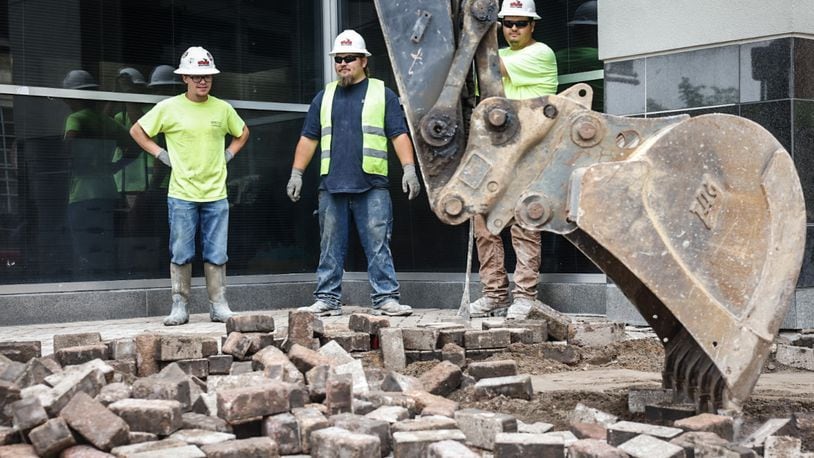Messer will participate in the Allied Construction Industries Construction Career Days on Wednesday and Thursday at the Warren County Fairgrounds in Lebanon.
This is touted as the largest construction-based career and hiring event in Ohio, Kentucky and Indiana. Scheduled to coincide with “In Demand Jobs Week (May 6-10),” last year’s Career Days connected more than 3,000 middle and high school students from 60-plus districts with more than 75 exhibitors.
This year, 3,265 students were registered, as of Monday.
The event is not open to the public. Students who are participating have been registered for this event through their schools, said Monica Edwards, a spokeswoman for the event.
However, event representatives are still willing to talk with any educator who wants to bring a group of students, Edwards added. Educators can email the event at mslone@aci-construction.org.
Schnelle has been with Messer since he graduated from college 22 years ago.
“It’s definitely a challenge,” he said of finding the right workers.
Messer has had a long history at Wright-Patterson Air Force Base, having completed its first job there, an office building, in 1939. Messer spearheaded 21 projects at the base during the Second World War.
In Schnelle’s time with Messer, the company has handled the construction of the Foreign Material Exploitation Lab at the base, the optics building (building 79), the Advanced Power Thermal Research Lab and the IT complex.
More recently, Messer is completing construction of the NASIC (National Air and Space Intelligence Center) complex — in fact, a ribbon-cutting is just days away, Schnelle said. (Questions about that were sent to NASIC representatives).
“That’s the largest single (construction) project the base has ever done,” Schnelle said of the NASIC project. “It is a really awesome building.”
Messer is spearheading the $100-plus million renovation of part of the Air Force Materiel Command headquarters building, another big project.
Further, Messer is also renovating 29 historic homes at Wright-Patterson.
That’s an important project for the Air Force, Schnelle said.
“My understanding is there are only two Air Force bases left in the country that have on-base housing that the Air Force owns, and this is one of them,” he said. “These historic homes, they certainly put a lot of historical value in them.”
Work on those homes started about two months ago. Messer is also working on building 620, the “tower” building on Wright-Patterson’s Area B.
Wright-Patterson “has been a great client for us and a great place to work,” the Dayton-area leader said. “It has been a great situation for us.”
Finding workers for all of those projects is a perennial challenge.
“On the management side, we’ve always been a company that has a culture of co-ops and interns, where we utilize the co-ops on our projects to help us build a pipeline of employees,” Schnelle said.
Messer has found that its co-op student-employees tend to stay on board after college, he said.
Credit: Jim Noelker
Credit: Jim Noelker
Messer has employed that same mindset for the crafts ranks, partnering with schools and trade schools to find interested high school students. He said Messer is one of the few companies in the nation that has an apprenticeship program certified by the U.S. Department of Labor.
Part of the approach is reaching out to schools, finding students willing to work on projects during the school year, to “hopefully transition to full-time employment when they graduate.”
“I think outreach to students in high schools and places like that are a big deal,” he said.
About the Author
